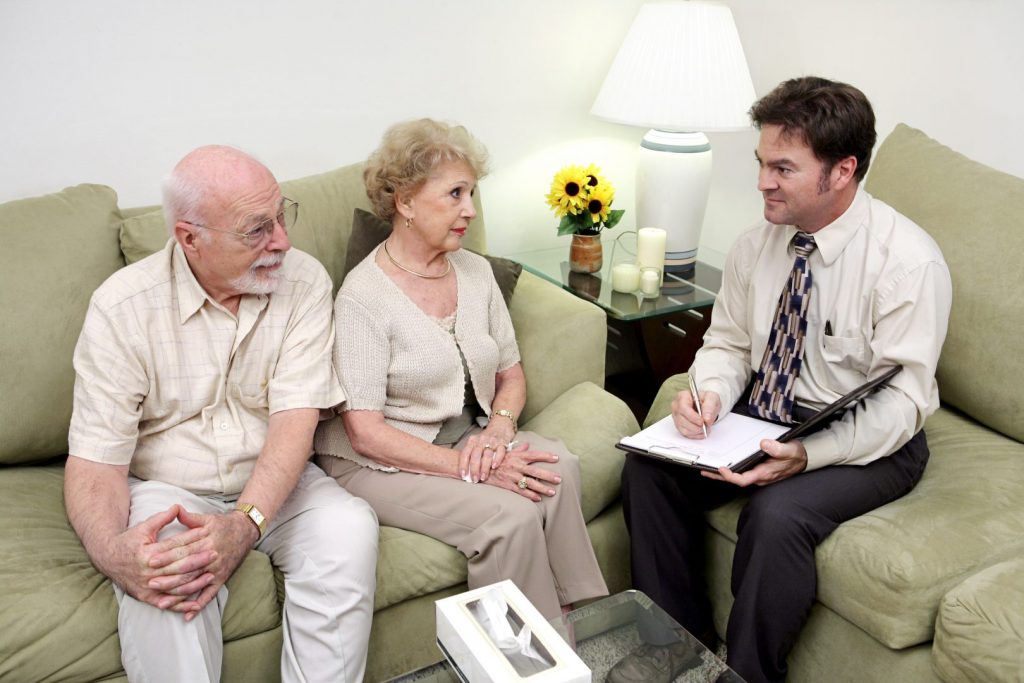
Meeting with a couple in their home to ask questions, learn about their needs, and discuss options and opportunities to make their living space better for them
Sales often can be as hard or as easy as we choose them to be. Our attitude and the process we use, as well as the way we approach them, can help determine the difficulty we find in making a presentation and attempting to close a sale. That’s the case with most products and services, but not so true when it comes to aging in place services and solutions.
They need not be very hard – especially if we believe in our abilities, in what we have to offer, and if we sincerely believe that we can help people with our solution. Often, we get so caught up in what we are selling that we lose sight of the client or we believe that our product or solution can do more than really is the case. Still, if we didn’t have this type of convincing belief in what we are offering, we wouldn’t make any sales.
One thing about making a sale to a client that needs our help to renovate or provide for their more effective use of their home is that there generally is not a single product or solution to introduce. We don’t enter their home carrying with us the product we want them to purchase from us. We don’t have an inventory of them (in various colors or sizes) in our truck that we can retrieve one and leave it with them once they purchase it. We can’t install it on the spot and be on our way having made another sale to a hopefully satisfied client.
Making a sale for an aging in place need takes longer in terms of time – not accomplished in a single presentation – and often involves multiple products, colors, finishes, and even contributions from additional team members.
Unlike making a sale of a product, especially one available in a limited supply, there is no pressure on us to make the sale or on the client to purchase anything. Ideally, they find value in our proposed solution and want to select it. We may have to adjust the timing, the scope, or other aspects of the job, but it’s not a sale where we have to convince them that they need to do something and make any type of a strong close to get their approval.
The fact that there is no pressure to perform – only to provide an acceptable solution that will help the client – there is nothing that creates a feeling that we have to make a sale. The client isn’t pressured into a decision, nor are we influenced to press harder than the situation really demands. We usually don’t even have a purchase agreement with us when we arrive at the client’s home for an appointment. How could we?
How can we know in advance what the client will need or want – unless we have had an in-depth conversation with them on the phone before scheduling the appointment? Still, what they think they want or what we might want to recommend to them will not be confirmed until we show up at their home and actually do a visual inspection of their space. Then, we will be in a better position to recommend a solution.
We don’t make any money for ourselves or our business, and we don’t get the satisfaction of helping the public, without making a sale. Still, there is no pressure for us to make a specific sale or to deliver a particular solution. Instead, we get to really listen to the client to fully understand and appreciate their needs and how we can help them. Then we can suggest a solution – or more than one. We can recommend various products, manufacturers, designs, and price points. We have great flexibility.
When we meet with a client at our office or in their home to discuss possible renovations or improvements for them, or equipment they would like to have installed, we are meeting or speaking with them to address their needs as they are describing them and as we concur that they are. There is no agenda for us to meet or predetermined sale that needs to occur. We don’t want the client to leave our office or to walk out of their home with no sale because that would mean that we have failed to help them or that they didn’t agree that we could help them in some way. Still, there is nothing specific that we need to sell. If there is no sale, that’s just the way it is.
Without any pressure to perform in a certain way, other than to do all we can to meet the expressed and discernable needs of the client, we are free to present and discuss any type of products or services that we feel will be beneficial for them – inexpensive or luxury, one or several. Making a sale is simple because it just involves having a conversation with the client about what can be done to help them.
